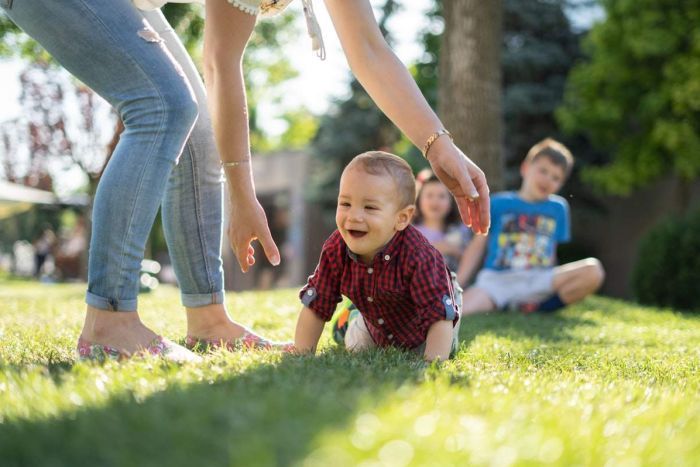Yes. I have finally done it. I have advocated enough, argued enough, presented enough evidence, gone through enough appeals and tribunals, that my severely disabled adult daughter will eventually get the support she needs under the National Disability Insurance Plan, the NDIS.
But I have to ask, why was it so hard? How did it come to this, that the wonderful insurance plan that was to take care of Australians who were born or became disabled, became such a complex, infuriating, illogical, bureaucratic nightmare for people with disabilities and their loved ones?
My daughter has an acquired brain injury. A severe one. Upon meeting her, after the first few minutes, it is patently obvious to anyone. She acquired it via an illness six years ago. The NDIS, which she was accepted into a year or so after her injury, has been her lifeline – the funds it provides mean the difference, quite literally between her life or death – she needs someone with her at all times to keep her safe.
Her lifeline, but an obdurate one. A nonsensical one.
When I finally took the National Disability Insurance Agency, the body that runs the NDIS, to the Administrative Appeals Tribunal to contest their rejection of vital support for my daughter, they appointed a lawyer from one of the biggest firms in Australia to represent them. I couldn’t afford a lawyer. And the public advocates who are funded to help people like me have long ago closed their books under the avalanche of people appealing NDIS decisions.
What happened then was incredible. I spent longer talking to the lawyer, the NDIS’s lawyer, the lawyer I was opposing in the tribunal, about my daughter’s needs than I have ever spoken to anyone employed by or working for the NDIS, about her needs.
That is, or should be, a damning statement.
I have no doubt that at the end of this process, a young lawyer sitting in some high-rise building in the CBD knows more about my daughter’s injury and her needs, than anybody in the body charged with providing funding to meet those needs.
And that is horrifying because if anyone from the NDIS had sought to engage with me at any stage over the two years this process has gone on for, they may have come to the conclusion that was eventually reached – that the requested support they were busy opposing and denying, was in fact needed.
The lawyer read the mountains of reports that my daughter’s specialists had provided. She read the pages of carefully constructed evidence I had written and submitted over the years. I have no doubt that the AAT Conference Registrar did likewise. I have no such belief that anybody in the NDIA did – because if they had, I would not have had to fight so hard or so long. I believe I have the diligence of that young lawyer to thank for the outcome last Friday and the agency’s eventual concession to every request.
The NDIS has become a big issue for Saturday’s election. There are now more than 500,000 Australians who have NDIS plans. Each of those half million people have relatives and friends who have witnessed their struggles to get what they need through a process that promised so much, but has infuriatingly gone so astray.
If each of those people thought about which of the major parties would deliver a better NDIS for their loved one or friend and voted accordingly, we would see change.
Here I am a single mother, albeit a literate and educated one, who fought against a law firm and their implacable bureaucratic client and won. I have no doubt that there are many other mothers across Australia with daughters (or sons) like mine that do not have the privileges or the social capital that I do.
Why should my daughter have a better life than theirs, just because she was lucky enough to have a mother who was lucky enough to have the skills to fight for her?
Which of the major parties would deliver a better NDIS? I don’t know for sure, but I can tell you that the one currently in power is the one that bears the responsibility for what once seemed like a golden beacon of hope, becoming this dark complex thing, that hires lawyers to fight mothers and that is driving people with a disability and their loved ones, mad.
First published in Sydney Morning Herald, May 17th 2022.



